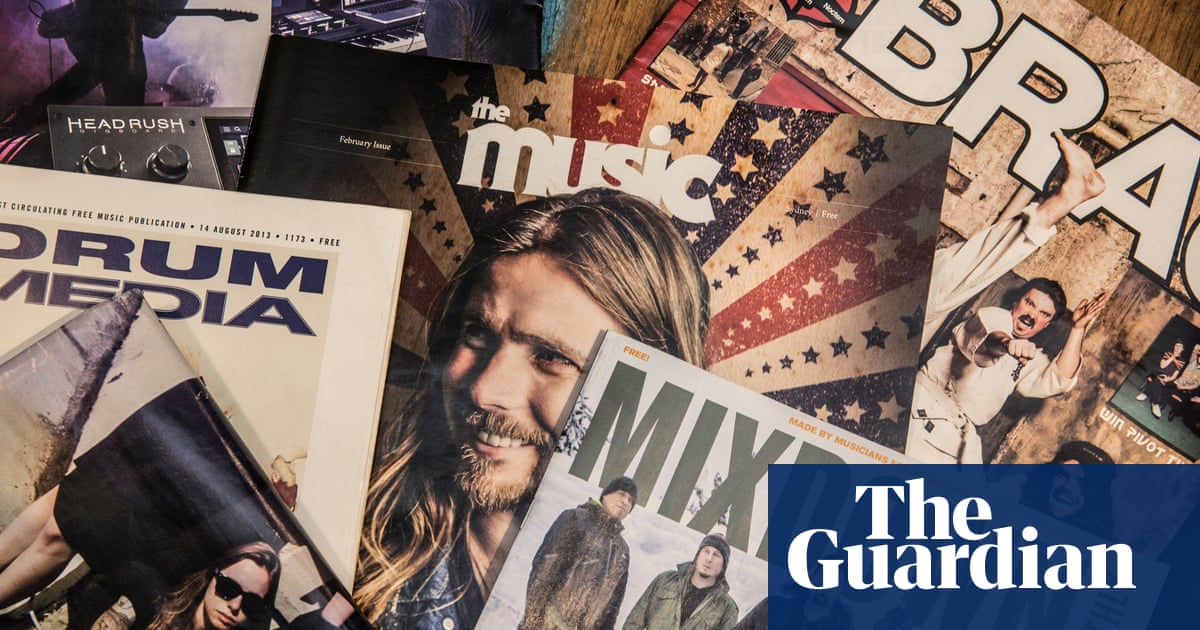
In early September 1990, Margaret Cott, editor of influential Sydney street press On the Street, stormed into the office of publisher Noel Crabbe and told him she was quitting.
Tensions at the free magazine had been growing for some time, but the reasons she walked outside are perhaps less interesting than what she found there: waiting for her on the pavement was the entire editorial staff – writers Michael Smith and Jack Marx, photographer Tony Mott, along with a slew of others. Cott had built such loyalty in her near-10 years at the helm that her team quit in solidarity and decided to launch their own magazine. Drum Media would go on to become the most influential street press title of them all, heralding the beginning of the industry’s golden era.
Australian street press was once a publishing force: free music magazines that lived where the action was – on the street, where new issues were distributed weekly outside shops, venues and cafes, catering to musicians and their fans at a grassroots level. While not unique to Australia, the medium found a bigger audience here than it did in America and the UK. Indeed, according to Mott, who was born in England and became an integral part of the rise of the medium in Australia, street press never had a chance in Britain against existing paid titles such as NME, Melody Maker and Sounds. In the 1980s, he says, “If you’d started a street press Sydney-style in London, some very large men might [have] come and had a word with you.”
The first Australian street press was a humble offering: a fold-over pamphlet in the late 1970s, titled TAGG, out of Melbourne. By the 1980s they proliferated around the country in various forms but shared three defining tenets: funded by the labels, promoters and brands who advertised in them, these titles were free to the public and picked up in droves; because they were weekly, they contained the most comprehensive gig guides of all pre-internet Australian music press; and because they were location-specific, they became endeared to – and inextricable from – their local and specific scenes. The subcultures that coalesced around them have largely collapsed, but at the time titles such as Drum Media and the Brag in Sydney; Beat and Inpress in Melbourne; Time Off, Rave and Scene in Brisbane; Xpress in Perth; and Rip It Up in Adelaide all served specific tastes, genre and scenes – from hard rock to indie to EDM – and became as integral to those readers as the bands, the venues, the punters.
Sign up for the fun stuff with our rundown of must-reads, pop culture and tips for the weekend, every Saturday morning
“Back when it started, there was almost a religious vibe: it was a part of your week,” says Andrew Mast, former group managing editor for Street Press Australia, which published numerous titles across the country in the 2000s and 2010s. “In Melbourne, you had to grab the street press before you went out on a Thursday night… [it was] a part of that almost religiosity of how a music fan went about their week. There is no doubt about that.”
For the writers and editors, the pay was low and the pressure high: only hours before the Inpress deadline, for instance, you might be dispatched, as I was, to a swanky St Kilda hotel to interview Tex Perkins and Tim Rogers, loafing side by side in bed and hardly keen to impart much of substance, with empty bottles of Veuve littering the floor around them. In the 2010s, freelancers would get as little as $50 for a 1,200-word cover feature. For album reviews, the pay was often just the CD itself.
Given the frequency of the print cycle, staffers would churn out an incredible amount of copy, and with editorial resources and guidance thin on the ground, you became “good” purely by weight of your output – so naturally, over time, these titles became a training ground. Young writers and photographers were given great access to famous acts and would go on to dominate the mainstream media: Mott is now a legendary rock photographer and Marx a noted journalist and author; poet and journalist Mark Mordue, music writer Bernard Zuel, and Triple J’s Myf Warhurst and Dom Alessio all came through the street press ranks too.
At its height, street press titles might shift 30,000 copies a week. It couldn’t last of course, and the advent of social media in the mid-2000s – which stole the ads the magazines relied on – heralded the beginning of the end. A small variety of free music titles still exist, but without those three defining tenets it isn’t street press as it was: beloved, inky, weekly paeans to music scenes long gone. The memories, though, remain.
Full Coverage: A History Of Rock Journalism in Australia by Samuel J Fell is out now via Monash University Publishing












